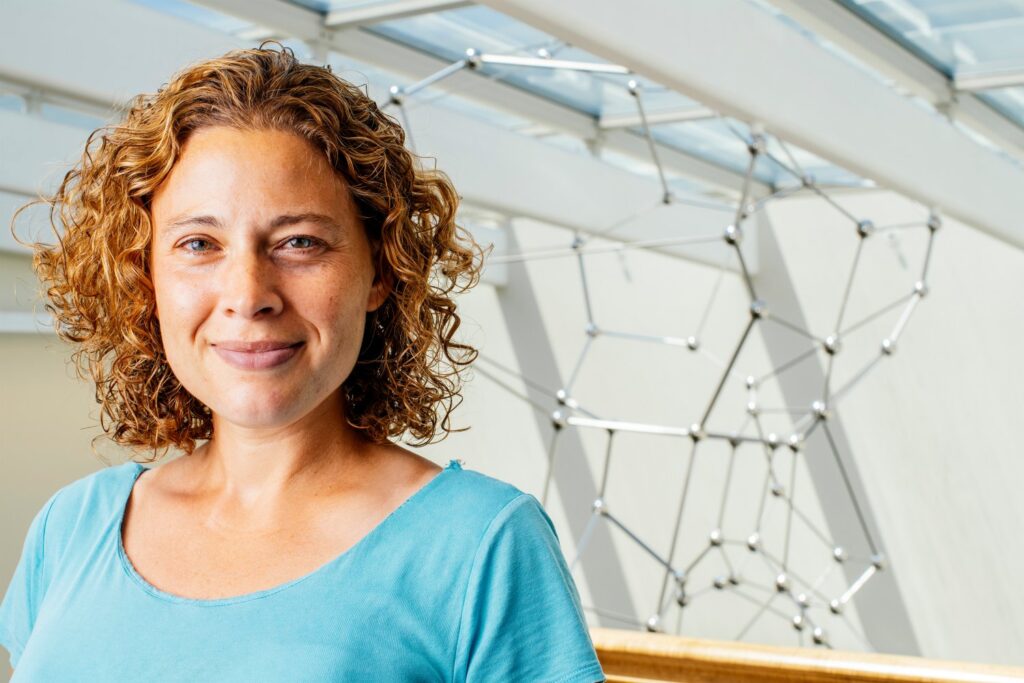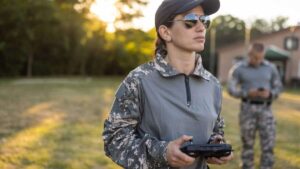
Danna Freedman, a prominent figure in the field of quantum research, is on a mission to find early adopters. As the faculty director of the newly established MIT Quantum Initiative (QMIT), Freedman is spearheading a comprehensive effort to leverage quantum advancements to address significant challenges in science, technology, industry, and national security.
This interdisciplinary initiative, one of MIT President Sally Kornbluth’s latest strategic ventures, aims to unite MIT researchers with industry experts to identify and solve practical problems where quantum solutions can have the most substantial impact. “We’ve already seen how the breadth of progress in quantum has created opportunities to rethink the future of security and encryption, imagine new modes of navigation, and even measure gravitational waves more precisely to observe the cosmos in an entirely new way,” says Freedman, the Frederick George Keyes Professor of Chemistry. “What can we do next? We’re investing in the promise of quantum, and where the legacy will be in 20 years.”
QMIT: A New Era in Quantum Research
QMIT, a nod to the “qubit,” the fundamental unit of quantum information, will officially launch on December 8 with a full-day event at MIT’s campus. The initiative plans to establish a dedicated space for academic, public, and corporate engagement, featuring state-of-the-art integrated quantum systems. Beyond MIT, QMIT will collaborate closely with the U.S. government and MIT Lincoln Laboratory to apply quantum hardware development and systems engineering to national security priorities.
“The MIT Quantum Initiative seizes a timely opportunity in service to the nation’s scientific, economic, and technological competitiveness,” says Ian A. Waitz, MIT’s vice president for research. “With quantum capabilities approaching an inflection point, QMIT will engage students and researchers across all our schools and the college, as well as companies around the world, in thinking about what a step change in sensing and computational power will mean for a wide range of fields.”
Understanding Quantum Mechanics
Quantum phenomena are as foundational to our world as light or gravity. At the atomic and subatomic levels, interactions are governed by quantum mechanics, a set of rules distinct from the physical laws of the macro world. Freedman explains, “Quantum, in a sense, is what underlies everything.”
Quantum devices can process information at incredible speeds and enable ultraprecise sensing and measurement. These capabilities become most powerful when optimized for specific use cases within a complete quantum system. QMIT will focus on collaboration across domains to co-develop quantum tools, such as computers, sensors, networks, simulations, and algorithms, alongside their intended users.
Building on MIT’s Quantum Legacy
QMIT will be organized into programmatic pillars led by top researchers in quantum, including Paola Cappellaro, Isaac Chuang, Pablo Jarillo-Herrero, William Oliver, Vladan Vuletić, and Jonilyn Yoder. While supporting core quantum research in physics, engineering, mathematics, and computer science, QMIT aims to expand its community into fields like astronomy, biology, chemistry, materials science, and medicine.
“If you provide a foundation that somebody can integrate with, that accelerates progress a lot,” says Freedman. “Perhaps we want to figure out how a quantum simulator we’ve built can model photosynthesis, if that’s the right question – or maybe the right question is to study 10 failed catalysts to see why they failed.”
“We are going to figure out what real problems exist that we could approach with quantum tools, and work toward them in the next five years,” Freedman adds. “We are going to change the forward momentum of quantum in a way that supports impact.”
Expanding Quantum Research and Education
The MIT Quantum Initiative will be administratively housed in the Research Laboratory of Electronics (RLE), with support from the Office of the Vice President for Research (VPR) and the Office of Innovation and Strategy. QMIT is a natural expansion of MIT’s Center for Quantum Engineering (CQE), which engages over 80 principal investigators to accelerate the practical application of quantum technologies.
Marc Baldo, the Dugald C. Jackson Professor in Electrical Engineering and director of RLE, notes, “CQE has cultivated a tremendously strong ecosystem of students and researchers, engaging with U.S. government sponsors and industry collaborators, including through the popular Quantum Annual Research Conference (QuARC) and professional development classes.”
William Oliver, CQE’s director, emphasizes the importance of deepening MIT’s commitment to quantum research and education. “We have an important opportunity now to deepen our commitment to quantum research and education, and especially in engaging students from across the Institute in thinking about how to leverage quantum science and engineering to solve hard problems.”
The “MIT-hard” Problem
QMIT will build upon MIT’s historic leadership in quantum science and engineering. In 1981, MIT hosted the first Physics of Computation Conference, which is widely regarded as the kickoff of the second quantum revolution. Today, MIT researchers continue to produce groundbreaking advancements in areas like quantum sensing and quantum simulation.
Freedman highlights the distinction between theoretical possibilities and practical applications. “Historically, when we think about the most well-articulated challenges that quantum will solve, the best ones have come from inside of MIT. We’re open to technological solutions to problems, and nontraditional approaches to science. In many respects, we are the early adopters.”
“That’s the ‘MIT-hard’ problem,” she says, referring to the deeply technical, collaborative work of developing practical quantum applications.
The QMIT launch event on December 8 will feature talks and discussions with MIT faculty, including Nobel laureates and industry leaders, marking a significant step forward in the Institute’s quantum journey.







